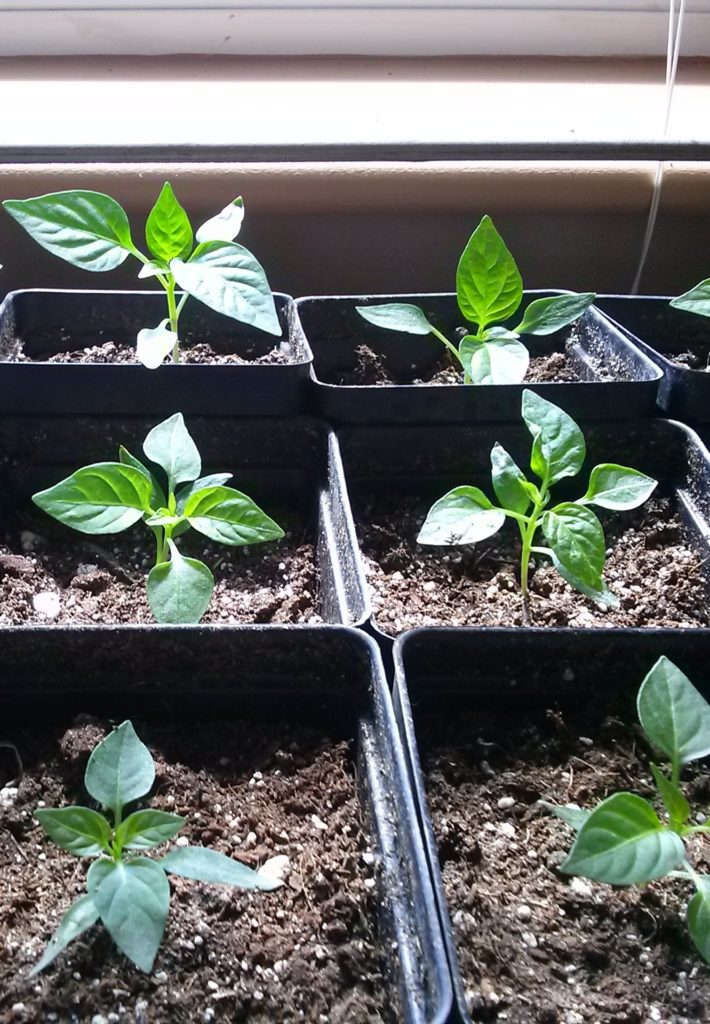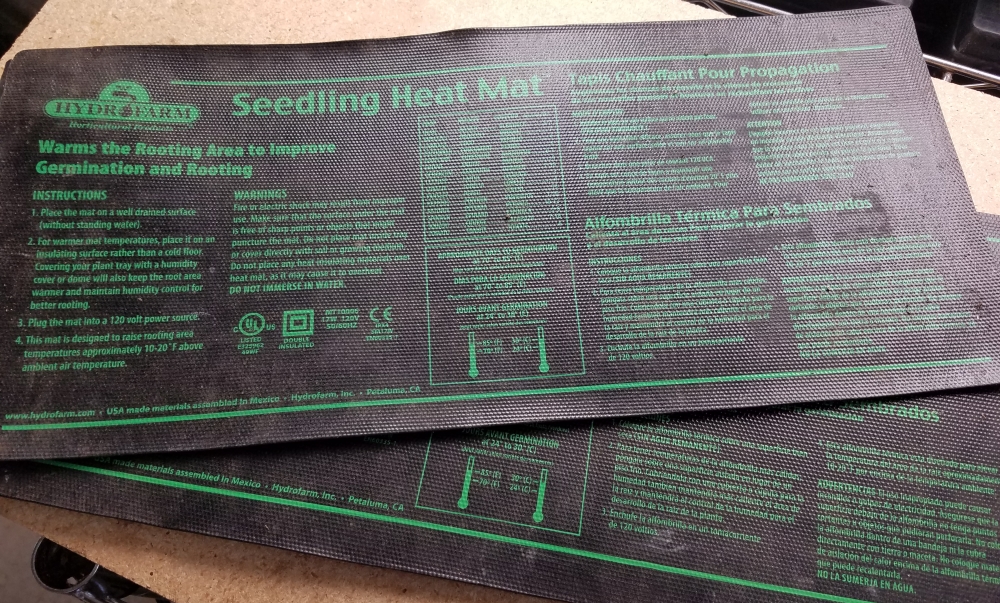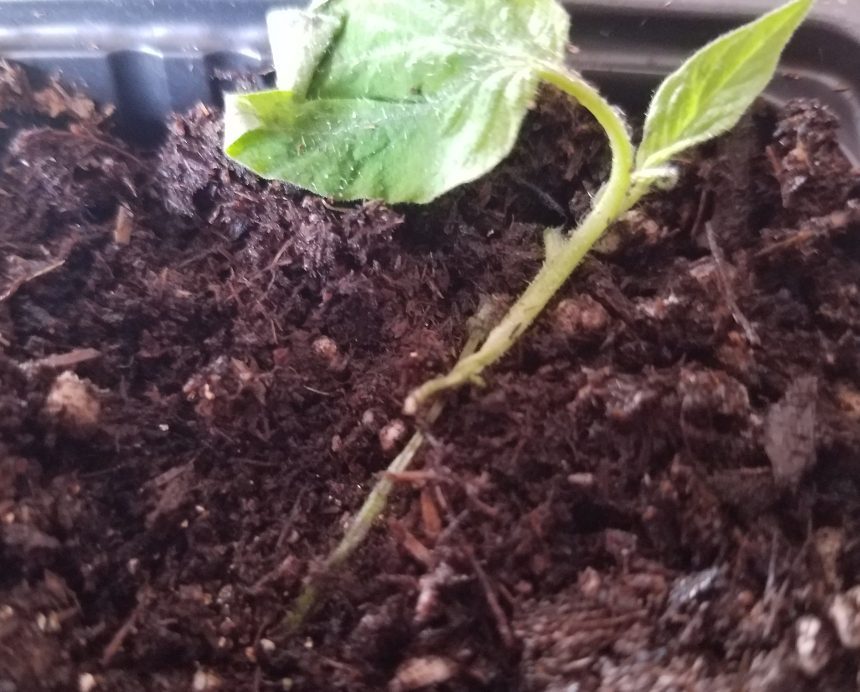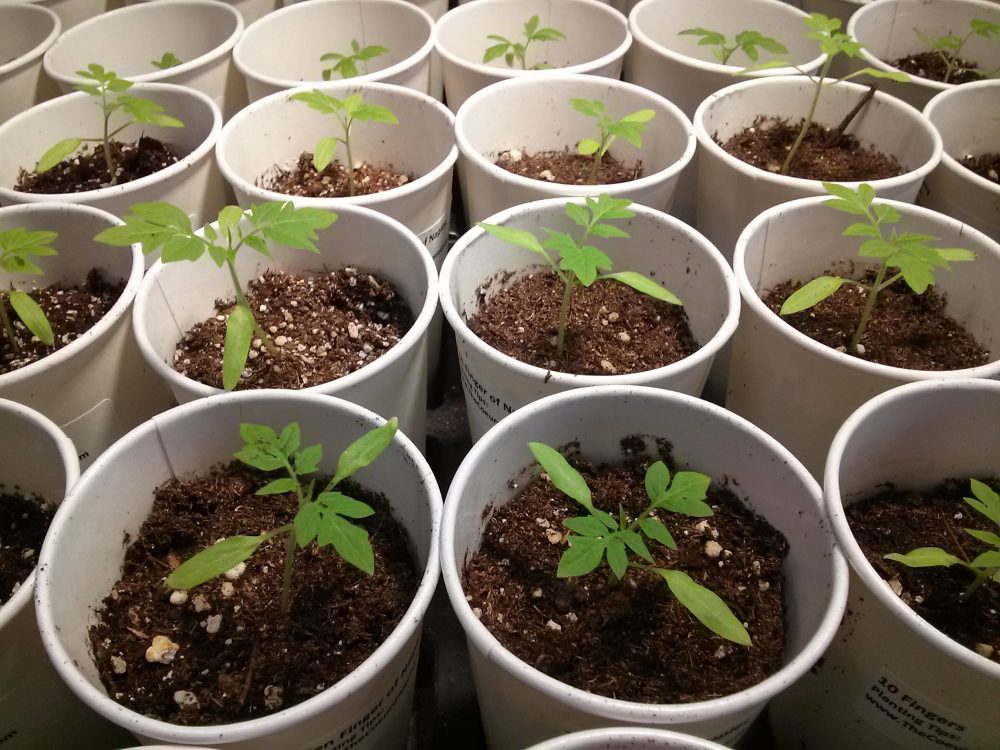
This post was updated on Feb.18, 2022.
Starting garden vegetables from seed is easy and cost effective – plus you’ll find pages upon pages of varieties and cultivars in catalogs and online! To ensure your seed starting is successful, avoid these 8 common seed starting mistakes.
- Starting Seeds at the Wrong Time. Timing is everything when it comes to growing from seed. Whether you are starting indoors or direct sowing into the garden, it’s critical to know your region’s last average day of frost. For north Idaho it’s May 15th. Warm season crops should be started indoors 6 to 8 weeks before this date; cool season crops 4 to 6 weeks prior to the frost date.

For north Idaho that means tomatoes, eggplant, and peppers should be started indoors from mid-March to early April. If these are started from seed in late April or May, they may not have enough time to mature and produce fruit in the garden. Cool season crops, like spinach, peas, lettuces and greens, can also be started indoors and transplanted into the garden in mid-to-late April (usually 2 to 3 weeks before the last frost date).
2. Using Inferior Growing Medium. Whatever you do, don’t go cheap or skimp on your seed starting medium. This is the foundation for your plant stock. To get your seeds off to a good start, choose a quality soil-less seed starting mix. These are usually a mixture of peat, coconut fiber, and perlite. The consistency is very light and fluffy. Avoid potting soil mixes that contain bark pieces and/or fertilizer. Heavier potting mixes can deter germination and regarding fertilizer, well, nature packs seeds with all the nutrients they need to get started. And finally, never use soil from your garden – it’s too heavy, lacks proper drainage, and may contain disease or insect eggs that can affect your tender seedlings.

3. Starting seeds in cold, wet soil. Seeds need warmth to germinate. A few days before planting, bring the seed mix into the house and warm it up. If the mix is dry, this is also a good time to add a cup or two of water to lightly moisten the mix. You want it moist — not soppy! Let the mix come to the ambient temperature in your house before planting. Once seeds are planted, use a heat mat to help move germination along and aim to keep soil temperature in the 65 to 70 degree range. Once the seedlings emerge, remove them from the heat mat.
4. Planting Seeds Too Deep. One of the main reasons why seeds don’t germinate is because they were planted too deep into the soil. When planted too deep, seeds can “use up” all their energy trying to make it to, and break through, the soil surface. Check the depth recommendations on the seed packet and follow these! Many seeds can be placed on the soil surface and covered with a ¼ to ½ inch of fine seed starting mix. Some seeds need light to germinate and should be scattered on the surface and not covered at all. When I start seed (and I start a lot!), I dampen the soil in the growing container first, then place the seeds on the surface and spray the seeds with a fine mist of water from a spray bottle (warm water, of course!). Finally, I lightly cover the seeds with the seed starting mix and spritz the soil again. This ensures good seed-to-soil contact and helps soften the seed coat.
5. Not Labeling Growing Containers or Trays. Guilty! How many times have I done this? I’m not telling, but suffice it to say, it has happened more than once! It’s so easy to get confused – you’re excited to get growing and before you know it you’ve planted three kinds of seed and you don’t know which is which. Seeds of a variety look alike and so do the seedlings! Plan ahead…grab a Sharpie and a plant tag, wooden stick, or address label and tag those containers or trays!

6. Not Enough Light. Seedling need bright light to grow. In fact, they need about 12 to 16 hours of light per day. Your sunny window may not provide enough light to get them off to a good start. An inexpensive LED fluorescent shop light will provide all the light your plants need. Make this easy and put your light on a timer. For stocky and healthy plants, place the light about 3 inches above the seedlings. No more scraggly, leggy seedlings!

7. Too Much Water. This is probably the #1 mistake in seed starting. Keep your seedlings moist, not wet. Too much water causes a fungal condition known as dampening off – seedlings will rot at the soil level and die. Let the soil surface dry a bit – it’s much better to be a little dry than too wet. No baby wants a soggy bottom. If you are using grow trays without holes, add water to the tray and not at the soil surface. The water will be absorbed from the bottom up.

8. Not Giving Seedlings Enough Attention. And speaking of babies, that is exactly what seedlings are and need to be treated as such. Young plants, like young humans and animals, require attention. Check on your seedlings several times a day to monitor moisture, temperature, and any signs of distress, disease, or insect issues. If neglected, they won’t survive. Now we know why garden centers are called “nurseries!”
A two-part guide to seed starting can be found on our blog. Read Part 1 here. And you’ll find Part 2 here. Happy growing!!


Leave a Reply